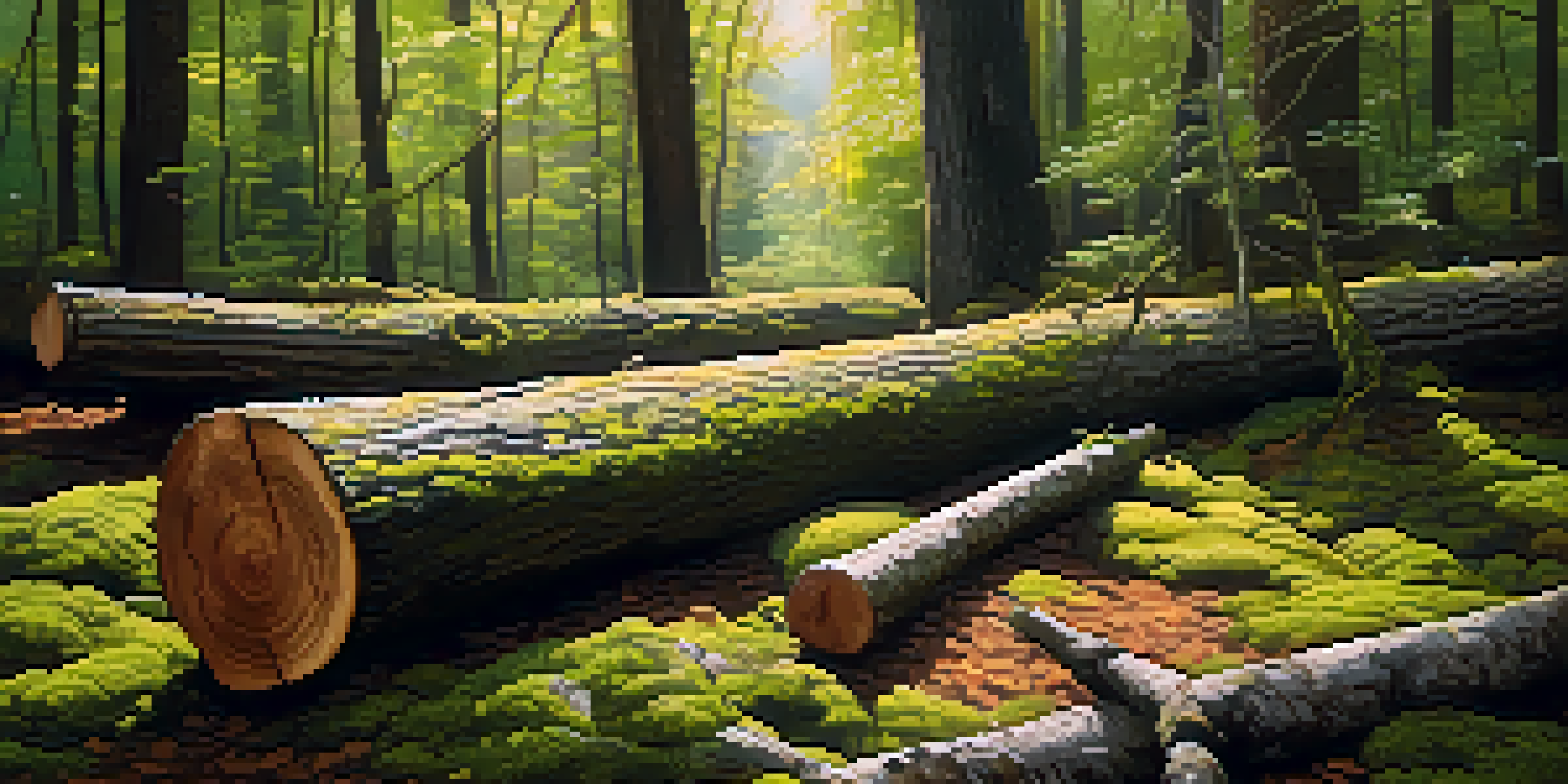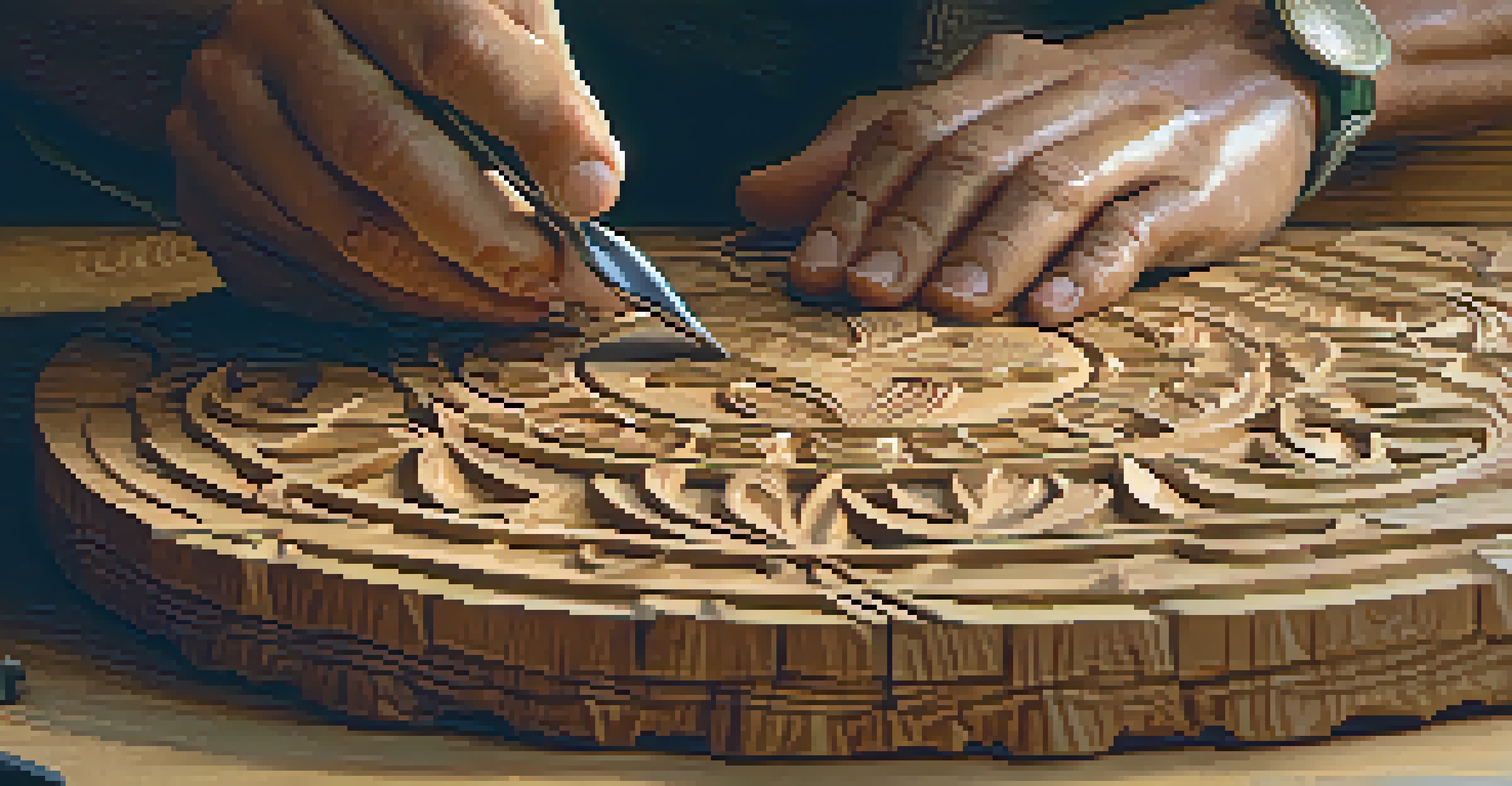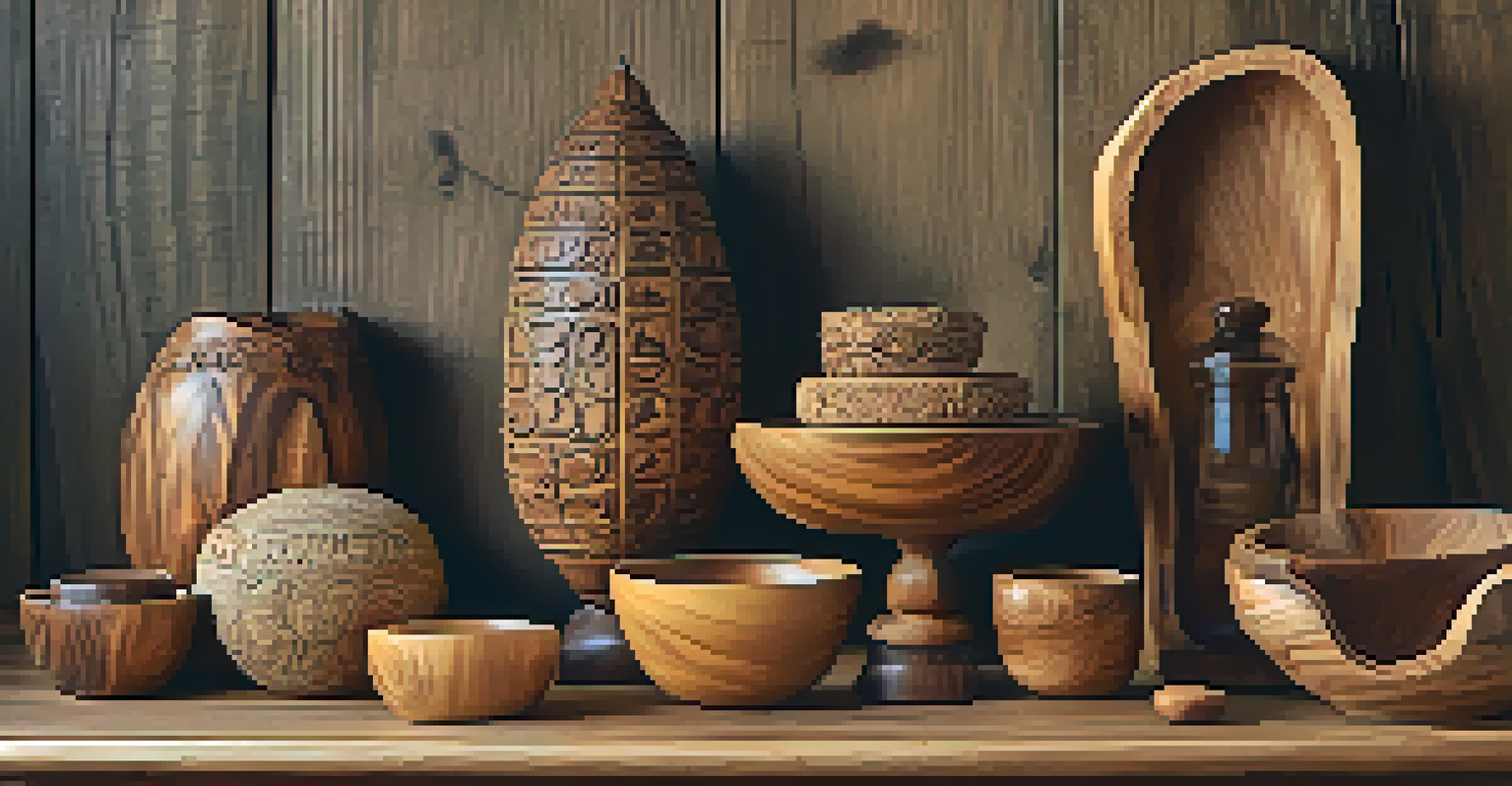Carving with Nature: Using Fallen Branches and Logs

Discovering the Beauty of Fallen Branches and Logs
Nature provides a treasure trove of materials just waiting to be transformed. Fallen branches and logs, often overlooked, can serve as a canvas for creativity. By repurposing these natural elements, you're not just creating art; you're also honoring the environment.
The creation of a thousand forests is in one acorn.
Imagine walking through a serene forest, where each fallen branch tells a story. These pieces of wood, shaped by the elements, can inspire unique designs and textures in your carvings. This connection to nature enhances the artistic experience, making it more meaningful.
Using natural materials encourages mindfulness and appreciation for the environment. Each piece you carve is a reflection of the journey it took to reach you, adding depth to your craftsmanship. Let’s dive into how you can start this rewarding journey.
Choosing the Right Wood for Your Carving Projects
Not every branch or log is suitable for carving, so it's important to choose wisely. Look for wood that is dry, free of rot, and has a good grain pattern. Hardwoods like oak and maple are often preferred for their durability, but softwoods like pine can also work well for beginners.

When selecting your wood, consider the size and shape of your project. A thick log may be perfect for a stool, while slender branches can be fashioned into delicate ornaments. Understanding the characteristics of each type of wood will help you decide what to use for your specific carving needs.
Embrace Nature for Creativity
Fallen branches and logs can be transformed into unique art pieces, fostering a deeper connection to nature.
Always remember to harvest responsibly. If you're taking wood from your yard or a local area, ensure it's allowed and sustainable. By being mindful of your choices, you contribute positively to the environment.
Essential Tools for Carving Fallen Wood
Starting your carving journey requires a few essential tools. A good carving knife, chisels, and a mallet will serve you well. For larger projects, consider adding a saw and a sander to your toolkit to achieve the desired shape and finish.
In every work of art the spirit of nature is present.
Each tool has its own purpose and understanding their functions will elevate your carving skills. For instance, a gouge allows for deeper cuts and curvatures, while a knife is perfect for finer details. Investing in quality tools not only improves your results but also makes the crafting process more enjoyable.
Don’t forget to prioritize safety while carving! Wearing gloves, using a cutting mat, and ensuring your tools are sharp will help prevent accidents. A safe workspace is essential for creativity to flourish.
Techniques for Carving Fallen Branches and Logs
Carving techniques can vary based on the type of wood and your project goals. Start with simple cuts and gradually progress to more complex designs as you gain confidence. Techniques like whittling, relief carving, and chip carving each offer unique results.
For beginners, whittling is a great way to develop your skills. This technique involves shaving away small pieces of wood to create shapes. As you practice, you’ll discover your own style and develop a feel for the wood’s response to your tools.
Choose Wood Wisely for Carving
Selecting the right type of wood is crucial for successful carving, balancing durability and project needs.
Remember, patience is key in carving. Take your time with each cut, and don’t rush the process. The beauty of your work comes from the care and attention you put into it.
Finishing Touches: Sanding and Sealing Your Carvings
Once you've completed your carving, it’s time to give it the finishing touch. Sanding is crucial to smooth out rough edges and enhance the natural beauty of the wood. Using progressively finer sandpaper will achieve a polished look that feels great to the touch.
After sanding, consider sealing your work to protect it from moisture and dirt. Natural oils or wood finishes can enhance the grain and provide a layer of protection. Choose a finish that aligns with the intended use of your carving, whether it’s decorative or functional.
A well-finished piece not only looks professional but also extends the longevity of your art. Putting in this extra effort demonstrates your commitment to quality craftsmanship.
Incorporating Nature into Your Home Decor
Your carved creations can beautifully enhance your home decor. From rustic wall hangings to functional items like bowls and furniture, there are endless possibilities. Incorporating these natural elements into your space creates a warm and inviting atmosphere.
Think about how each piece can tell a story within your home. A carved log can serve as a unique coffee table, while smaller carvings can adorn shelves or be gifted to friends. Each item not only adds aesthetic value but also sparks conversations about the artistry and effort behind it.
Share Your Carving Journey
Engaging with communities and showcasing your work can enhance your skills and inspire others in their carving endeavors.
Embracing natural decor reminds us of our connection to nature and can inspire a more sustainable lifestyle. By showcasing your carvings, you elevate the beauty of the environment within your everyday life.
Sharing Your Carving Journey with Others
Carving can be a solitary pursuit, but sharing your journey can enrich your experience. Consider joining local wood carving groups or online communities where you can exchange ideas and techniques. This camaraderie often leads to inspiration and collaboration.
Participating in workshops or classes can further enhance your skills while connecting you with like-minded individuals. Learning from others’ experiences can shorten your learning curve and introduce you to new tools and methods.

Don’t hesitate to showcase your work on social media or personal blogs. Sharing your progress and finished projects can inspire others to explore the world of carving. Plus, it opens up opportunities for feedback and growth.